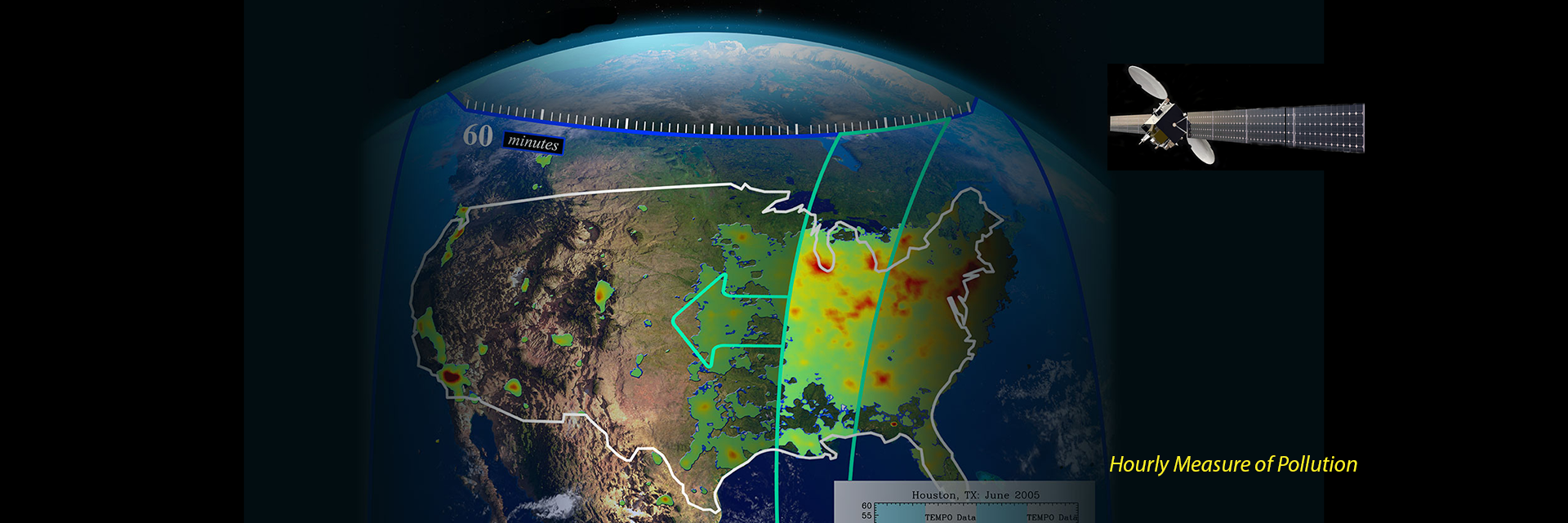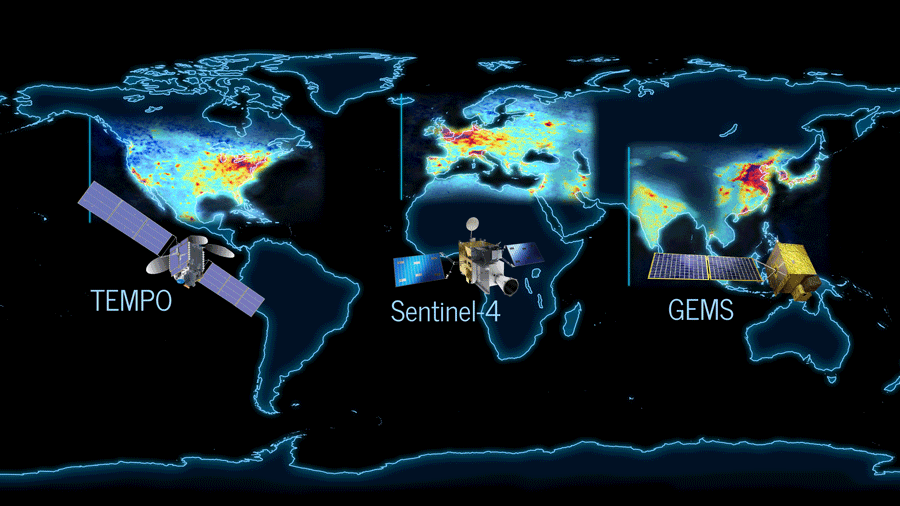Mission Overview
What's in the air we breathe?
The TEMPO mission aims to answer this question with more detail and precision than ever before, by creating a revolutionary new dataset of atmospheric chemistry measurements from space. TEMPO is the first space-based instrument to measure atmospheric gases that impact air quality across the North American continent every daylight hour at high spatial resolution.
The TEMPO instrument consists of a spectrometer sensitive to ultraviolet and visible light which views sunlight reflected off the Earth’s surface and clouds to measure the composition of the atmosphere. In 2023, TEMPO hitched a ride on the commercial satellite Intelsat-40e (IS-40e) to a geostationary orbit about 22,000 miles above Earth's equator. This vantage point enables TEMPO to track hourly variations in ozone, nitrogen dioxide, aerosols and other key elements of air pollution from the Atlantic to the Pacific, and from the Yucatán Peninsula to the northern parts of Canada. The instrument can detect enhancements in gases like nitrogen dioxide at an area of four square miles—far better than the ground resolution available from previous satellites.
TEMPO is the first funded project of NASA's Earth Venture Instrument program, which includes small, targeted science investigations designed to complement NASA's larger research missions. It is part of the agency's Earth System Science Pathfinder program. TEMPO's new stream of data enables researchers to improve our understanding of the factors influencing air quality, like how different trace gases are emitted, chemically transformed and transported in the atmosphere. TEMPO also provides publicly-available, near real-time measurements to improve air quality forecasting.
TEMPO is the North American component of a global constellation of satellites observing air quality from geostationary orbit, which also includes Sentinel-4 (Europe) and GEMS (Asia).


